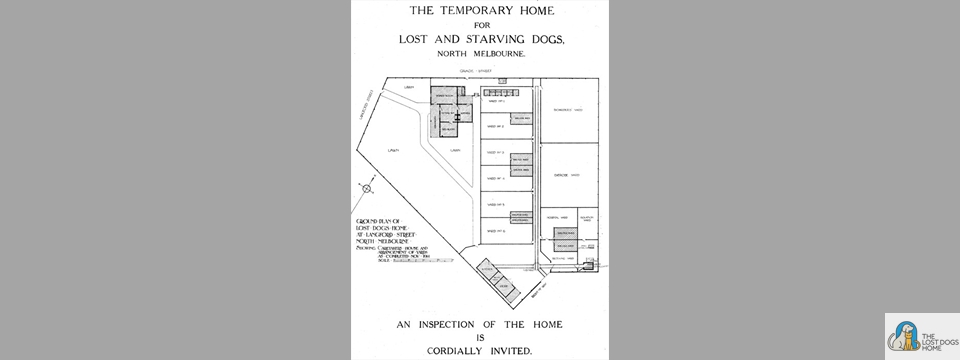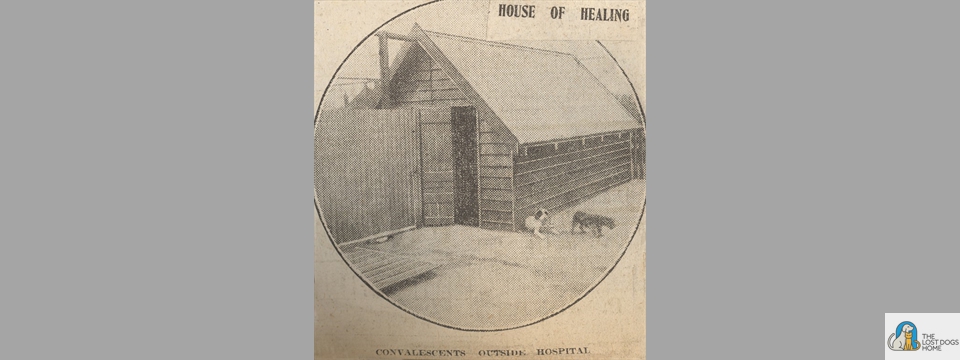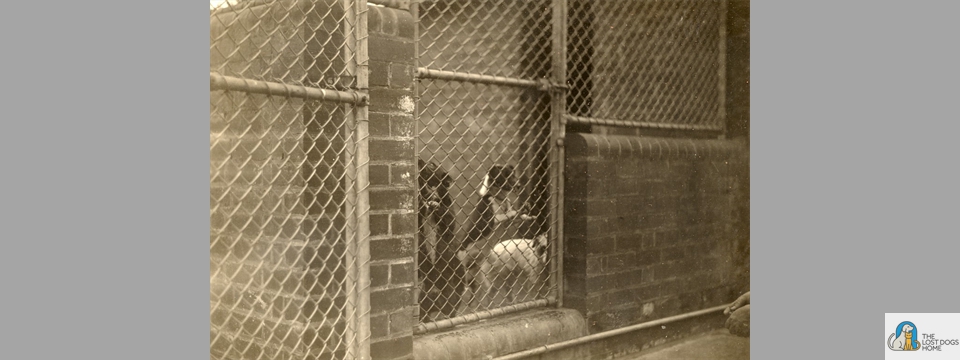Origins of the Home
 In 1910, a group of concerned and influential individuals dedicated their efforts to improving the welfare of stray and starving dogs in Melbourne. Up to this time, there had been no organised residence for the lost dogs of Melbourne, although a number of these generous individuals had been made caring for stray dogs privately.
In 1910, a group of concerned and influential individuals dedicated their efforts to improving the welfare of stray and starving dogs in Melbourne. Up to this time, there had been no organised residence for the lost dogs of Melbourne, although a number of these generous individuals had been made caring for stray dogs privately.
Their vision was to build a shelter that would help reunite lost dogs with their owners, while finding homes for those who were less fortunate and left unclaimed. The group was also active in campaigning against the local council to cease the inhumane destruction of stray dogs through poisoning or drowning. They wanted to ensure that those animals who had no possible alternative home, or were incurably diseased or severely injured, were euthanased in the most humane way possible.
To raise initial funds and generate public support for the establishment of a lost dogs’ home in Melbourne, the renowned Oscar Asche Company was approached to perform a theatrical matinee. The performance, along with further public donations, raised a total of £860.
The first official meeting of subscribers took place on 21 December 2010 and the elected committee worked tirelessly to raise funds while scouting for an appropriate location for the permanent shelter.
After 18 months of searching, the Committee eventually gained approval to purchase four blocks of Crown land at auction for £257 on June 26, 1912. The land was located on the corner of Gracie and Langford Streets near Macaulay railway station in North Melbourne – the same site on which the Home still stands today. Inspired by the sucessful Battersea Dogs Home in England, moves were made to establish a similar institution, and the planning and building of the Home began.
On February 28, 1913, The Temporary Home for Lost and Starving Dogs was officially opened by Her Excellency Lady Gertrude Denman, the wife of the Governor-General Lord Denman. In front a large gathering, Lady Denman was presented with a small silver statuette of a dog. Several of the guests had gone to the Home with collars and chains with the idea of finding a dog to take home, and there was plenty of choice – marking the beginning of Victoria’s first ever adoptions program. The Home also established boarding kennels to generate funds to support its work.
At the time, the shelter consisted of a basic weatherboard cottage with a board room, three additional rooms and a bathroom for the keeper. There were six large yards with sheds to house the shelter’s residents, and various sheds for storage and cooking.
Within the first few years of operation, the severity of neglect and the number of stray and abandoned dogs on the streets of Melbourne was becoming more and more evident. In 1915, the Home broadened its services to collect and care for dogs found in municipal councils including Brunswick, Footscray, Hawthorn, Northcote, Port Melbourne and Williamstown. Other councils also sent dogs that had been seized, and in 1917 the Home was first appointed as the place of safekeeping for dogs seized by City of Melbourne. After its first year of operation, the number of dogs cared for by the shelter increased from 1496 to 2007 — and that number has continued to grow ever since.
 The Home on the day of opening on February 28, 2013
The Home on the day of opening on February 28, 2013 General view of the Home in 1913
General view of the Home in 1913 The Home on the day of opening on February 28, 1913
The Home on the day of opening on February 28, 1913 Lady Denman declares the Home open on February 28, 1913
Lady Denman declares the Home open on February 28, 1913 The committee pose for a photograph at the opening of Home in 1913
The committee pose for a photograph at the opening of Home in 1913 The Keeper and his dog taken on 3rd March, 1913
The Keeper and his dog taken on 3rd March, 1913 A scene in the yard at the Home in 1914
A scene in the yard at the Home in 1914 A scene in the yard at the Home in 1914
A scene in the yard at the Home in 1914 The keeper and dogs in the yard in 1915
The keeper and dogs in the yard in 1915 Visitors view the dogs available for adoption in the front yard of the Home
Visitors view the dogs available for adoption in the front yard of the Home The Lost Dogs' Home view from Langford Street in 1920
The Lost Dogs' Home view from Langford Street in 1920 Keeper Bob Fraser tends to dogs in the yard in 1920
Keeper Bob Fraser tends to dogs in the yard in 1920 The municipal council dog cart collected stray dogs off the street and out of harm’s way
The municipal council dog cart collected stray dogs off the street and out of harm’s way Garage, original horse drawn cart and the Home's first motorised cart in 1920
Garage, original horse drawn cart and the Home's first motorised cart in 1920 Boarders kennels (L) and original yards (R) in 1929 pre-reconstruction
Boarders kennels (L) and original yards (R) in 1929 pre-reconstruction Front lawn and newly constructed yards one to six in 1929
Front lawn and newly constructed yards one to six in 1929 The newly constructed number six yard in 1929
The newly constructed number six yard in 1929 Garage and yards in 1929 looking out east over Melbourne
Garage and yards in 1929 looking out east over Melbourne

















